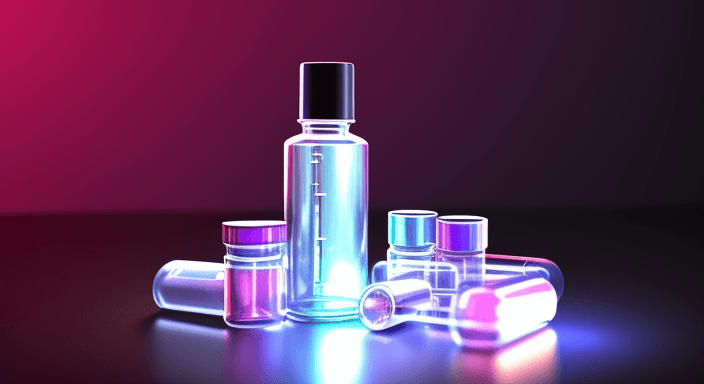The scope and intensity of a substance’s effects hinge on several factors. These encompass the method of administration, dosage, mindset and environment, as well as individual and environmental elements. So why drugs dosage measurements are important?
We simply cannot control some of these prerequisites, and we cannot influence them in any way. However, others are completely under our control. At the same time, their contribution to the final result can be considered fundamental.
Of course, I’m talking about the dosage. This is the most important factor in the action of any substance that depends on a particular person. Immediately after the decision as a whole to take or not to take the substance. Considering all this, it seems to me very important to talk about dosage measurements and safety.
This article is based on the material about dosages from PsychonautWiki.
Harm Reduction vs Misdosing

Compliance with the dosages of psychoactive substances is a fundamental principle of Harm Reduction for several reasons:
- Preventing Overdose: Accurate dosing is crucial to prevent overdoses, which can lead to severe health complications and even death. Overdosing can occur when a person takes more of a substance than their body can handle, leading to toxic effects.
- Minimizing Side Effects: All psychoactive substances can have side effects, which can range from mild (like dry mouth or drowsiness) to severe (like heart problems or seizures). Administering an incorrect dosage of a substance can lead to adverse experiences such as severe anxiety, unpleasant physical side effects, hospital admission. By sticking to the recommended dosage, the risk and severity of these side effects can be minimized.
- Getting the expected and safe effects. Consuming a dose that is too low can often result in discomfort and frustration, which can be hazardous if it prompts individuals to readminister at levels higher than initially intended. This can lead to unexpectedly intense, overpowering, and potentially harmful experiences.
- Avoiding Dependency and Addiction: Regularly taking higher doses of a substance can lead to increased tolerance, meaning that more of the substance is needed to achieve the desired effect. This can lead to a cycle of escalating use and increase the risk of dependency and addiction.
- Reducing Harmful Interactions: Psychoactive substances can interact with other substances or medications a person might be taking, which can lead to harmful effects. By adhering to the recommended dosage, the risk of these interactions can be reduced.
Harm reduction is all about minimizing the negative impacts associated with drug use, and accurate dosing is a key part of this approach. It’s always important to consult with a healthcare provider about the safe and effective use of psychoactive substances.
Selecting the Dosage

The term “dosage” pertains to the quantity or measure of a psychoactive substance that is administered. Although the scales may differ, they can typically be categorized into six stages:
- threshold
- light
- medium
- potent
- severe
- overdose.
Each of these stages corresponds to a varying degree of anticipated effects and possible side effects, contingent on the substance in question and the individual’s physical constitution.
Users should steer clear of dosages that they find unfamiliar or unsettling. Novice users should always commence with a minimal or light dosage, gradually escalating to a standard or common dose. This approach ensures that their bodies are compatible with the substance and do not display any allergies or unusual sensitivity.
Following the initial trial, the user may opt to augment the dosage. It is recommended to enhance the quantity in measured increments, typically adding a quarter or half of the previous dose. But some substances can be particularly challenging to handle. Patience is key when dealing with new substances! The dose should never be doubled or tripled as this significantly heightens the probability of a bad trip or side effects such as anxiety, panic attacks, and psychosis.
This approach substantially reduces the risk of an unintended negative experience; it’s crucial to remember that everyone’s reaction to each substance varies based on factors like personal tolerance, brain chemistry, body weight, metabolism, stomach contents, and individual sensitivity. Another consideration is the purity of the substance, which can vary between product batches.
For details on the suitable dosage for any substance, research should be conducted using a mix of resources such as Mindheal, Bluelight, Tripsit, Erowid, PsychonautWiki, and Drugs-Forum. Also don’t forget about Wikipedia, Google, and Pubmed. If conflicting information about dosage is discovered, it’s always safer to start from the lowest dose.
Testing for Allergies

Some people, particularly those with health complications or hypersensitive immune systems, may experience adverse or allergic reactions to substances. These reactions can manifest as uncomfortable physical or cognitive effects or heightened sensitivity. The most effective way to avoid this is to conduct an allergy test with every new batch of a substance received.
To conduct an allergy test properly, one can administer a tiny quantity of the substance (1/5 of a regular dose) and then wait for several hours to a few days.
During an allergy test, one should monitor for any unusual side effects such as skin rashes, hives, difficulty in breathing, an unusually rapid heartbeat, or a burning sensation on the skin. Depending on the severity of these symptoms, medical attention may be required.
I understand that this is too medical and scrupulous an approach. However, if you have a tendency for allergic reactions or have a severe chronic disease, you should be careful and cautious about activities with recreational substances, especially if they are new to you.
Units of Measurement

When measuring dosages, it’s crucial to use precise and accurate units of measurement. The units used can vary depending on the form of the substance. Here are some common units:
Milligrams (mg): This is the most common unit for measuring solid substances. Many psychoactive substances are active at the milligram level, so a scale that can accurately measure milligrams is essential.
Micrograms (µg): Some substances, like LSD, are active at the microgram level. This is one-thousandth of a milligram. Accurately measuring substances at this level requires specialized equipment and is not typically something that can be done at home.
Milliliters (ml): This is a common unit for measuring liquid substances. Some psychoactive substances come in liquid form, or a solid substance might be dissolved in a liquid for dosing. A syringe or dropper with milliliter markings can be used to measure these.
International Units (IU): This is a unit of measure used for vitamins, hormones, vaccines, blood products, some medications and similar active substances.
Say no to Eyeballing

Eyeballing, in any context, is strongly advised against. It is a highly imprecise method of measuring substances that involves making a rough estimate of the weight by merely looking at the substance. Given the minimal visual difference between 10 mg and 20mg, it can lead to an individual consuming an excessive amount of a substance.
Eyeballing substances that are active at extremely low doses (under 10mg) and have sensitive dose-response curves is particularly hazardous. And this is a fairly large list of substances, among which there are many popular and in-demand.
There are various eyeballing methods, however, they are all ultimately equally inaccurate and dangerous.
Also, users should never rely on the statements of the supplier of the street substance about the weight of their product. It is not uncommon for suppliers to mistakenly or intentionally distribute the wrong amount of product, which can lead to an overdose.
Milligram Scales for Drugs Dosing

Milligram scales are the choice of those who care about health and want to minimize possible harm. It is highly advised to invest in a reliable and precise digital milligram scale to ensure safe and recommended dosage consumption. A modest investment of $10-50 in such equipment can make the difference between a safe, enjoyable experience and a dangerous, negative one.
But here’s some bummer. Milligram scales priced under at least a few hundred dollars are not capable of accurately weighing doses below approximately 50 mg, and they can be inaccurate under 10 mg. For highly active substances with a pronounced dose-dependent effect, it is worth purchasing a higher-level scale or using other dosing methods.
To select a high-quality scale, you need to read reviews before purchasing and make an informed personal decision.
Ideally, you need to choose a scale with a reading accuracy of 0.001 g.
When using a scale with an accuracy for example of 0.01 grams (10 mg), the weight can be deviated by 10 mg in any direction. This means that if you measure 20 mg of the substance, the results may vary between 10-30 mg. It`s not great. For more information about scales with specific examples of models, visit TripSit Wiki.
Weighing technique on the scales
For the most accurate measurement, the scale should be used on a completely flat surface, away from vibrations, wind, and drafts.
Low battery levels can also impact the scale’s accuracy, so batteries should be replaced periodically.
Refrain from using personal cards (like ID or debit cards) to arrange substances, including dividing doses. If you’re out and about and get apprehended, there’s a risk that law enforcement will swab your card with color-test reagents to determine if your card is tainted with illicit substances.
Remember, that most milligram scales tend to be more accurate in higher ranges compared to lower ranges. As such, it’s advisable to weigh one’s substance while the included calibration weight is on the scale. The following steps provide a method for achieving the most accurate measurement:
- Verify that the correct weighing unit is selected, as it might have been altered accidentally.
- Calibrate the scale.
- Place the calibration weight that comes with the scale onto the scale without tarring.
- Add an empty gel capsule and record the weight without tarring.
- Pour the powder into the gel capsule.
- Record the weight of the filled capsule.
- Subtract the weight from step 3 from the final weight in step 5.
- Especially for highly potent substances (under 10 mg), follow up with volumetric liquid dosing.
Double-checking

Double-checking is a crucial step in ensuring the correct dosage of psychoactive substances. Here are some steps to take:
Verify Substance Identity: Make sure you’re confident in the identity of the substance you’re using. Many psychoactive substances look alike, and they can have very different potency levels.
Use a Reliable Scale: Make sure you’re using a reliable and accurate scale. It should be able to measure to the milligram (0.001g) or even microgram (0.000001g) level for certain substances. Always calibrate your scale according to the manufacturer’s instructions to ensure accuracy.
Check Measurements: After measuring out your dose, check it again to make sure it’s correct. This is especially important if you’re interrupted during the process.
Use a Second Opinion: If possible, have someone else verify your measurements. A second set of eyes can help catch any mistakes.
Record Your Dosages: Keep a record of the dosages you’re taking. This can be helpful for tracking your response to different doses and can provide valuable information in case of an emergency.
Remember, even with careful measurement and double-checking, using psychoactive substances carries risks, including overdose.
Volumetric Liquid Dosing
For more potent substances, it is strongly recommended to use Volumetric Liquid Dosing (VLD). It is the preferred method as most standard milligram scales are not capable of accurately weighing doses below 10-15mg.
VLD involves dissolving a known quantity of a compound in a liquid medium to facilitate accurate measurement and dosing. In the context of harm reduction, it’s crucial to prepare certain compounds that are too potent to measure with traditional weighing scales within a liquid solution. I will talk in detail about this method of dosing in a future article.
Conclusion

Understand the Substance: Different substances have different potencies, and what is a safe dose for one might be dangerous for another. Always research the substance you’re using to understand its typical dosage range and effects.
Use Accurate Measurement Tools: Never estimate a dose by eye. Use a digital scale that can measure small amounts accurately. For liquid substances, use a syringe or dropper that shows the volume in milliliters.
Start Small: If you’re using a substance for the first time, start with a smaller dose than you think you’ll need. This is often called a “test dose”. It’s better to feel less than you expected than to accidentally take too much.
Wait Before Redosing: Many substances take time to produce their full effects. Wait at least 1-2 hours before deciding to take more.
It’s also important to note that the effects of a substance can vary greatly from person to person, even at the same dose. Factors such as body weight, metabolism, overall health, and tolerance can all affect how a person responds to a psychoactive substance.
✔️
This marks the finish of today’s session. It is my hope that this piece was enlightening.
If you want to advance the growth of this blog, I suggest the following actions:
- Subscribe to our social networks.
- Circulate a link to this article among your associates.
- Give recognition to this blog on relevant platforms or discussion groups.
Should you identify any necessary additions or corrections in this article, feel free to initiate a dialogue with me via Contact Form or email. I am always open to communication.
I appreciate your valuable time and consideration ⚖️




